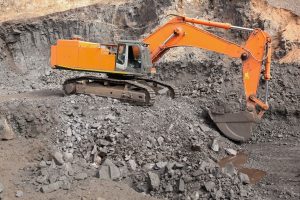Mining is an essential industry that provides resources crucial for everyday life. However, traditional digging methods can cause significant damage to mining sites, leading to costly repairs and delays. To address this, non-destructive digging (NDD) offers a safer and more efficient solution. By using advanced technology, NDD ensures that we dig with precision, avoiding damage to underground utilities and structures.
Non-destructive digging uses high-pressure air or water to loosen soil, which is then sucked up by powerful vacuum trucks. This method is less invasive and reduces the risk of accidents and unexpected problems. For mining sites, this is particularly important as it helps maintain the integrity of the site while allowing essential work to continue smoothly.
Using NDD, we can complete projects faster and with more accuracy. This means fewer interruptions, safer conditions, and a more efficient workflow. As we explore the benefits and future of NDD in the mining industry, we will see how this advanced technique is changing the way we approach digging and maintenance tasks.
What is Non-Destructive Digging (NDD)?
Non-destructive digging, or NDD, is a method of excavation that minimises damage to underground utilities and structures. Instead of traditional digging, which involves heavy machinery and can cause significant disruption, NDD uses high-pressure air or water to break up the soil. The loosened soil is then sucked up by a powerful vacuum truck. This method ensures that we can excavate safely and precisely without harming important underground services.
The technology behind NDD includes advanced Class A pump systems that guarantee accurate digging. This accuracy is vital when working near gas lines, water pipes, or electrical cables. By using NDD, we can expose these utilities without causing any damage, making it easier to repair and maintain them. The ability to dig precisely also means we can complete our tasks more efficiently, avoiding unnecessary delays and additional costs.
Another crucial aspect of NDD is its versatility. This method is suitable for a wide range of applications, from residential areas to large-scale civil construction projects. Whether it’s installing new utilities, repairing old ones, or conducting routine maintenance, NDD provides a safe and effective solution. Safety interlocks and enhanced protocols further ensure that both the operators and the site remain protected throughout the process. By using NDD, we can tackle a variety of excavation challenges while maintaining the highest standards of safety and efficiency.
Benefits of NDD for Mining Sites
Non-destructive digging (NDD) offers several benefits specifically for mining sites. First, it ensures precise excavation, which is essential when working around existing underground structures. With NDD, we can accurately locate and avoid critical utilities, reducing the risk of costly damage. This precision is a game-changer for mining sites where even a small mistake can lead to significant problems.
Another major benefit is the efficiency of NDD. Traditional digging methods can be slow and labour-intensive, causing delays in mining operations. NDD, with its powerful vacuum trucks, can dig at a speed of 5600 Bar litres per minute. This rapid excavation capability means we can complete tasks much quicker, keeping the mining project on schedule. Faster excavation means less downtime and a more streamlined workflow, which is crucial in the mining industry.
NDD also enhances safety on mining sites. Traditional excavation methods involve heavy machinery and manual labour, which can be risky. NDD, however, uses high-pressure air or water to break up the soil, minimising the need for heavy machinery. This reduces the risk of accidents and ensures a safer working environment for everyone involved. Additionally, the advanced safety interlocks and protocols used in NDD protect both the operators and the site, further improving safety standards.
Lastly, NDD is environmentally friendly. Unlike traditional methods that can cause significant soil disruption and erosion, NDD targets only the areas that need to be excavated. This minimises environmental impact and helps preserve the natural state of the mining site. By choosing NDD, we can ensure that mining operations are carried out in a more sustainable and responsible manner.
How NDD Minimises Damage at Mining Sites
Non-destructive digging (NDD) is a groundbreaking method for minimising damage at mining sites. The traditional way of digging can lead to unintentional hits on underground utilities, causing expensive repairs and project delays. With NDD, we use high-pressure air or water to break up the soil and a vacuum to remove it, which makes the process much more controlled. This way, we can avoid damaging critical underground structures, ensuring the site’s integrity.
One of the biggest advantages of NDD is its precision. The advanced Class A pump system ensures that we dig only where we need to. This targeted approach significantly reduces the risk of hitting underground utilities like pipelines or electrical cables. By accurately exposing these utilities, we make it easier to inspect and repair them, avoiding unnecessary disruption and cost. Mining sites benefit greatly from this precision, as it allows operations to continue smoothly without unexpected setbacks.
NDD also contributes to a safer working environment. Traditional digging methods often involve heavy machinery, creating risks for both the operators and the site. NDD, on the other hand, uses safer, less invasive techniques that minimise these risks. Safety interlocks and enhanced protocols protect the workers and the site, ensuring a safer excavation process. By prioritising safety, NDD helps maintain a more secure and efficient mining operation.
Future of NDD in the Mining Industry
The future of non-destructive digging (NDD) in the mining industry looks promising as technology continues to advance. As we develop more refined tools and techniques, the benefits of NDD will only increase. For instance, integrating advanced scanning and mapping technology with NDD can create even more precise and efficient excavation methods. This would allow us to have detailed underground maps before starting any digging, improving planning and reducing the risk of hitting underground utilities.
Sustainability is another factor driving the future of NDD in mining. Traditional excavation methods can cause significant environmental damage, such as soil erosion and habitat destruction. NDD is a more environmentally friendly alternative, as it targets only the necessary areas, preserving the surrounding environment. As the mining industry faces increasing pressure to adopt sustainable practices, the demand for NDD is expected to grow.
Moreover, as regulations around safety and environmental impact become stricter, NDD will likely be adopted more widely. Mining companies will need to comply with these regulations, and NDD offers an excellent solution for meeting these requirements. By continuing to innovate and improve NDD techniques, we can make excavation safer, more efficient and more sustainable for future mining projects.
Conclusion
Non-destructive digging (NDD) is transforming how we approach excavation and maintenance in the mining industry. By providing a precise, efficient, and safe alternative to traditional digging methods, NDD helps minimise damage to underground utilities and structures. This not only reduces costs and delays but also ensures a safer working environment. The future of NDD looks bright, with advancements in technology and a growing focus on sustainability driving its adoption.
If you need reliable and safe excavation services for your mining projects, consider iVac WA. Our advanced equipment and experienced team are committed to delivering high-quality non-destructive digging solutions. Contact iVac WA today to learn more about how our non-destructive digging services can assist you with your excavation needs.

